by Editor | Jun 27, 2011 | Accomodations
By Elena del Valle
Photos by Gary Cox

The Peech Hotel
Since 2010 The Peech Hotel in Johannesburg, South Africa is a Fair Trade in Tourism SA certified property. Fair Trade in Tourism SA (FTTSA) is a non-profit organization that promotes sustainable tourism development. The certification means a third party has examined the hotel, its practices and its records closely and confirmed the property is committed to sustainability, and operating in a socially, economically and environmentally responsible manner. The concept is based on adherence to specific criteria for fair wages and working conditions, fair distribution of benefits, ethical business practices, and respect for human rights, culture and the environment.

A room at The Peech with a view of the gardens
As part of its responsible tourism commitment The Peech supports Little Eden, a local nonprofit, with a guest donation program and monthly staff stays.
“Little Eden is very grateful for the continuous support received from The Peech Hotel,” said Nichollette Zulu who works in public relations at Little Eden, by email. “Over and above the regular monetary donations from The Peech Hotel, our Society is offered a night stay for two people meals included every month. We draw the list according to the birthday celebrations. This initiative has been running for over a year now.”
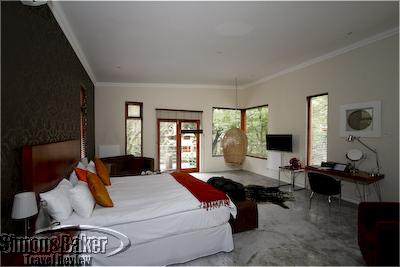
The Peech demonstrates that luxury can be green
Within the property The Peech focuses on four aspects: recycling, energy conservation, water conservation, and green design. To that end the hotel has an on-site probiotic waste facility that allows all food waste to be processed and recycled into garden fertilizer on site; has an on-site water bottling facility that provides drinking water for the restaurant and rooms, reducing plastic bottle waste; recycles as much non-biodegradable waste as is possible in South Africa including cans, paper, cardboard, glass and used kitchen oil; donates old furniture and linens to Little Eden; and keeps a compost heap to fertilize the flowerbeds.
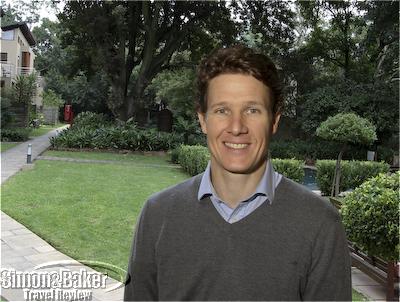
James Peech
As part of its conservation efforts the hotel has solar water heating throughout the property including guest rooms, the kitchen and the laundry reducing electricity usage by a third; staff replace use timers and day-night sensors where possible to cut down use; maintains an electricity supply equal to that of a standard South African household; has installed gray water recycling in the Garden Suites which provides water for garden irrigation and reduces the use of chlorinated municipal water; has water efficient dual-flush toilets and water efficient landscaping; waters lawns only in early morning and late evening to minimize water evaporation; and uses ecological detergents and cleaning agents in the laundry and kitchen.
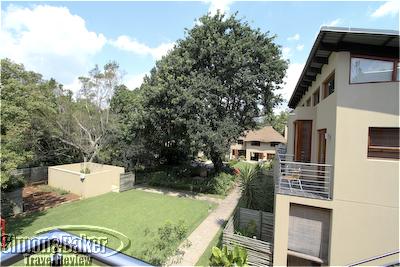
The hotel grounds include green space
Other green practices include hotel rooms with double-layer insulation to reduce heat in summer and heat-loss in winter. There are 92 square meters of green space per hotel guest to keep the hotel’s footprint to a minimum; the bistro grows some of its own herbs and vegetables keeping food deliveries down and the kitchen stocked with organic ingredients; and the hotel only uses rechargeable batteries. Kudos to The Peech!
Visit the Simon & Baker Travel Review for information about Johannesburg and our most recent stay at The Peech Hotel.
by Editor | Jun 13, 2011 | Accomodations, Food
Article and photos by Elena del Valle
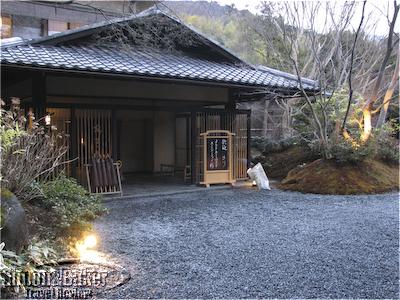
Entrance to the Ryokan Yagyu-No-Sho
Earlier this year when I was in Japan I visited Izu, an area of the country known for its hot springs. The highlight of my stay was spending the night in a luxury ryokan, a traditional Japanese hotel. My brief visit was especially rewarding and memorable for the experience itself as well as the many luxury features the ryokan offered. While the property catered mostly to Japanese customers it was part of a national alliance of luxury ryokans that facilitated bookings by international travelers.
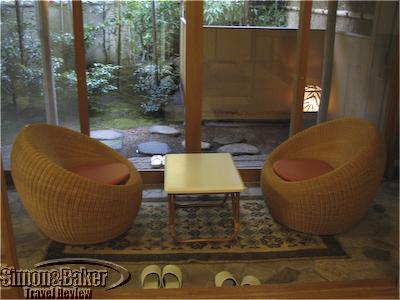
Looking out at my corner garden
In spite of steep linguistic challenges I felt welcome and would be pleased to return for a longer stay. Some of the characteristics of the ryokan I enjoyed the most were the traditional style of the facilities with flower arrangements (made by one of the owners) and artwork, manicured gardens with water features, friendly and service oriented staff, hot spring related offerings and delicious gourmet meals. There was excellent and fast complimentary WiFi connectivity in my suite, an amenity I greatly appreciated.
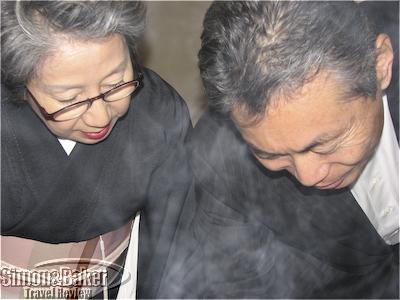
The ryokan owners preparing a meal
Yagyu-No-Sho, a traditional style ryokan with modern conveniences in the heart of a village, was owned and managed by Takashi Hasegawa and his wife. In the entrance foyer, my eyes were drawn to the wall wide bamboo forest with small birds, a beautiful artwork made of wood panels painted by a Japanese artist in her 90s who is well liked by the imperial family. In her painting, one of the staff explained, she uses only natural materials. The green in the painting was from oxidized copper and the white was from a stone.
On arriving at the ryokan we were invited to remove our shoes and wear a pair of house slippers (this was rather uncomfortable because the slippers they provided were several sizes larger than my feet and made it necessary for me to walk slowly to avoid tripping). I shed my slippers to enter my room which was covered wall to wall with tatami mats.

Artwork on wood panels with natural materials
My second floor room, Harvest, had a private bathroom with a separate section that housed a wood tub filled with hot springs water. The room, divided into several areas by thin paper and wood walls, was pretty and spacious. The décor was in a traditional Japanese style furnished with simple floor level chairs and tables. Instead of a bed the staff set up a sleeping area, at the end of the day, with futons, duvet blankets and feather pillows that were kept in a closet during the day. I slept very well in the comfortable floor level futon. There was a small indoor patio with Western style chairs and a table next to the room where my sleeping area was set up. Next to the patio there was an outdoor area that could be reached, while wearing special outdoor slippers, via sliding glass doors.
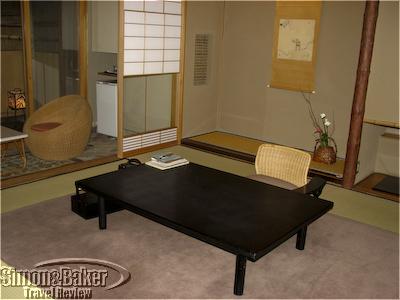
Ryokan room with traditional furnishings
The room had a living area with a low table and one cushioned armless low chair. A recessed area was home to a flower arrangement. There was also a sitting area with a low table and two chairs. Under the table there was space to rest my feet on the warm floor. To one side stood a small vanity with a mirror, tissue paper, and a cushion.
The bathroom was divided into three separate rooms. One housed a water closet with an automated Japanese heated toilet and and a mini wood sink. There was a wide room with a sink; next to it was the bath tub room which had just enough space for a large wood bath tub and a small shower area placed against the wall. The shower corner, low to the ground, consisted of a small wood stool and a handheld hose to shower thoroughly before dipping in the hot water of the tub.

Ryokan staff in traditional dress
The temperature within the room was comfortable for me. It was controlled with a remote control. Amenities, set inside a cloth bag on the tatami floor, were: a set of Japanese pajamas, shower cap, toothbrush, hairbrush, cotton pad, cotton swabs, and hair scrunchy. There was a mini refrigerator next to the coat closet.
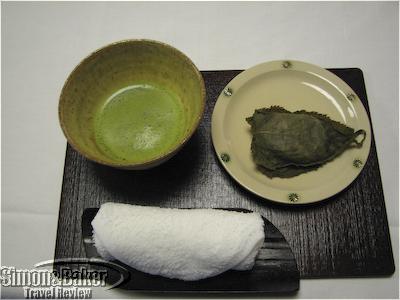
Excellent green tea
Dinner, served at 6 p.m. sharp consisted of 12 generous courses of Japanese dishes. Although it would usually have been served in individual rooms, the ryokan staff set up group seating for the six of us in one of their large rooms. To keep our hands clean we were provided with three wet towels during the course of the meal. The service began with a taste of unfermented sake as an aperitif. Meals, clearly, were an important part of the experience at this ryokan. There was a pretty dinnerware service with different dishes for the varied courses. Three ladies looked after us and served us copious quantities of delicious food.
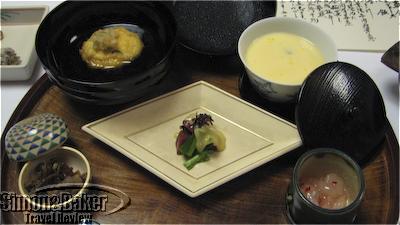
The food was attractively served and delicious
Breakfast the next morning was equally well served and as satisfying. We had rice; pickled vegetables; miso soup; beef, shiitake mushrooms and long onion cooked with a large leaf over charcoal; boiled sliced beef with a sweet soy sauce; tuna and long onion with vinegar miso; salted and fermented squid innards; deep fried tofu burger; dried fish; egg custard; sweet red bean soup with rice cake; and sherbert.
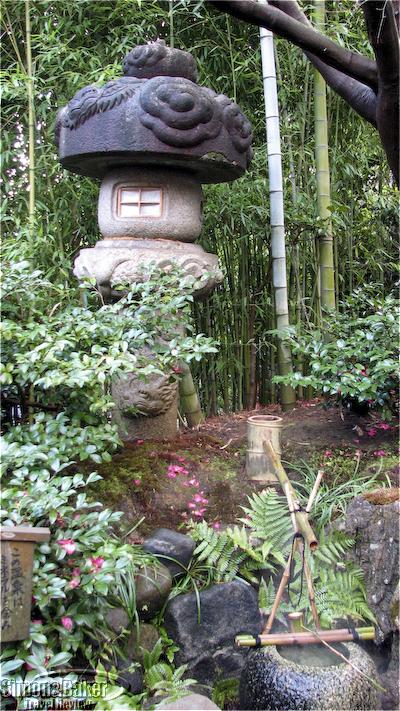
Tranquil gardens
If the opportunity presents itself I would gladly return to Yagyu-No-Sho. Next time I would request one of the ryokan’s ground floor luxury suites with indoor water features where some of my travel companions stayed. Yagyu-No-Sho, 1116-6, Shuzenji, Izu-City, Shizuoka-Prefecture, Japan, +81558724126, Fax +81558725212, http://www.yagyu-no-sho.com
by Editor | Jun 6, 2011 | Accomodations, New Articles
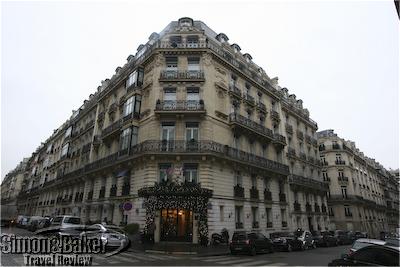
Hotel de La Trémoille
Hotel de La Trémoille, a small hotel minutes away from the Champs Elysees in Paris, France offered a good option for accommodations. The multistory hotel on a quiet street offered comfort and luxury accommodations with modern touches and friendly service. Our team’s junior suite was comfortable and warm in winter with a view, from the balcony, of the famous Eiffel Tower and excellent internet connectivity.
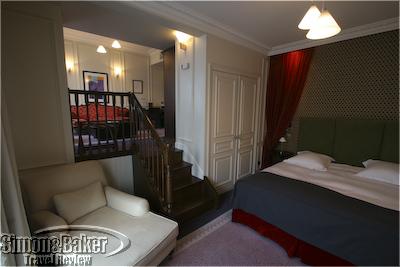
The junior suite was on two levels
Visit the Simon & Baker Travel Review for additional information on Paris and the Hotel de la Tremoille.
by Editor | May 31, 2011 | Accomodations, Attractions, Luxury Travel, Restaurants, Video
Article and photos by Elena del Valle

A temple in Tokyo
Earlier this year, before the earthquake hit, I spent a few days in Japan. Although my calendar was overfull it had been years since my last visit to Japan and I couldn’t resist a last minute invitation to the Land of the Rising Sun. Finding a desirable seat on the flights nearly caused the trip to fall apart before it even started. In the end I persevered and with the help of a friendly airline agent everything worked out.
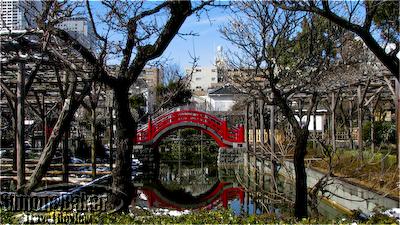
A beautiful garden and bridge in Tokyo
On my arrival at Narita International Airport, I cleared the airport formalities with ease and was thrilled the transfer service driver was waiting for me. He spoke English very well, allowing us to chat during the drive to the Hotel Okura Tokyo (2-10-4 Toranomon, Minato-ku, Tokyo 105-0001, + 81 03 3582-0111, http://www.hotelokura.co.jp/tokyo/en/), where I spent the first three nights in the city. The eleven story contemporary hotel located across the street from the United States Embassy, had 801 rooms, modern facilities, nine restaurants, a fitness center with a swimming pool ($70 per day for hotel guests), spa, ATMs friendly to foreign credit cards, WiFi router for rent (a router compatible with my iPad cost 4,725 yen or about $18 a day at the time) and service oriented English speaking staff. My room was contemporary in style and new looking with a glass enclosed shower, a separate bathtub and a Japanese toilet.
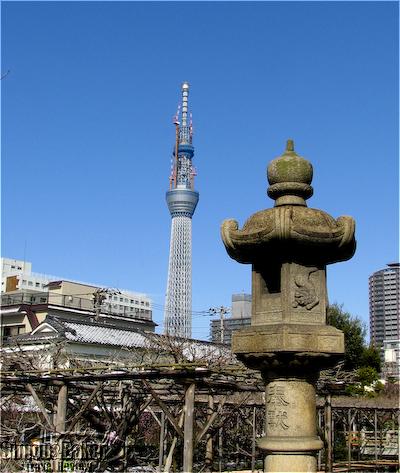
An old versus new contrast with a temple column in the foreground and the Sky Tree in the background
The first day I had breakfast at the Terrace Restaurant, a ground level restaurant facing a snow covered inner courtyard at the hotel. I liked the buffet’s Eastern and Western selection and a delicious tea made from fresh herbs. Later during my stay I sampled some of the items sold at the restaurant’s shop and was quite pleased with the quality.
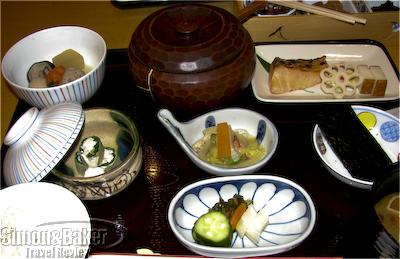
Breakfast at Yamazato restaurant at the Hotel Okura
By far my favorite breakfast in Tokyo was at Yamazato, the hotel’s Japanese restaurant. As I descended the stairs to the restaurant a young man at the entrance welcomed me in English and led me to a table. Even though the two times I was there I was the only Westerner I felt welcome. The wait staff spoke a few words of English making it possible for us to communicate basics. The servers brought me a glass of water when they spotted my vitamin pack. One of them offered to serve me beef or pork in case I didn’t want fish but what is a Japanese breakfast without fish?
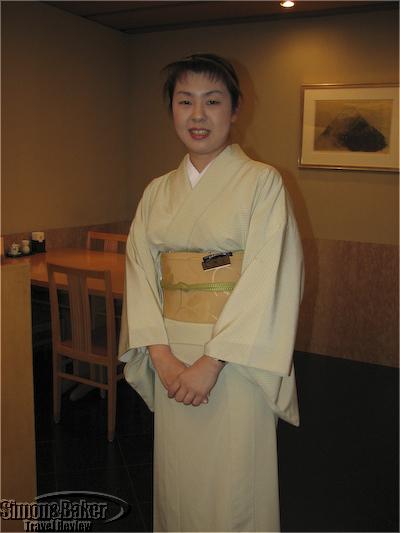
A waitress at Yamazato restaurant at the Hotel Okura
The Japanese breakfast came in a bento box with rice, fish dish (sauteed yellowtail, octopus), hearty and especially flavorful miso soup, pickled vegetables, steamed vegetables, bamboo shoots, mushroom, eggs, and a couple of unidentified dishes. Everything was delicious.
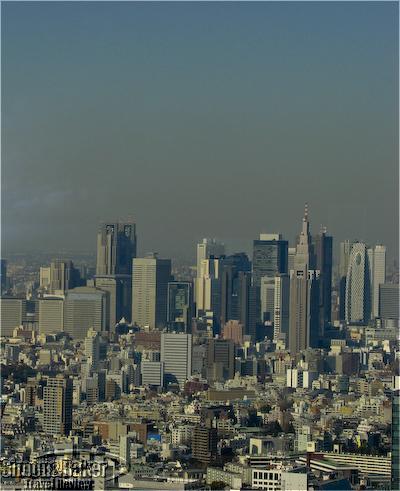
The Tokyo skyline from the Mori Building
In the same way that New York is associated with the Big Apple, Sumiyo, our tour guide, explained, visiting the city of Tokyo can be thought of as exploring an egg. Architecture Guide in Tokyo, a color brochure in English, explained the ways in which Tokyo is like an egg; a handy map on the back pointed to the salient architectural areas of the city. The 284-acre imperial palace appeared in the lower right side of the egg. The inside of the brochure contained a series of descriptions of architectural areas of note within the city based on the egg simile: Omelet-rice for semi-European before 1945, Bacon egg for Western styles before 1945, Atsuyaki tamago Japanese style before 1945, Egg sand for modern style between 1945 and 1975, Boiled egg for plain style between 1976 and 1985, Scrambled egg for post modern style between 1986 and 1995, and Pudding after 1996.

The National Art Center in Tokyo
During the next two days, we would be seeing several neighborhoods within the “egg” of Tokyo, a metropolis of 13 million souls established in 1868 following the collapse of the shogun government. We began across town from our hotel with a visit to Edo Kiriko in Hanashyo (http://www.hanashyo.com), a 60 year old family owned fine cut glass store and workshop. The traditional Japanese home where it was located had such narrow spaces only four or five people could enter at one time. During our visit we watched the owner and his young apprentices engrave and hand polish each colorful piece without using hydrochloric acid at a ground floor workroom, and we saw the finished cut glass pieces on display in a small upper floor showroom. Hanashyo sold Kome-tsunagi, Itokiku-tsunagi and Tama-ichimatsu, three registered proprietary designs. We also visited a second showroom where glass cutting classed were offered. We were invited to experience cutting glass for ourselves for a couple of minutes each. It was fun.
One of my favorite experiences in Japan was a special abbreviated daytime performance of four geishas at Hisago-an restaurant (in Japanese only, http://kaiseki-hisagoan.com/course_hisagoan.html/). The geishas we saw that day normally only perform at the restaurant at night. Three of them danced, one sang briefly and the most senior one played a banjo like instrument. Following the dance they demonstrated one of the games they play while entertaining guests and, with the help of an interpreter, answered questions. In their company we took a rickshaw ride from the restaurant to Senso-ji (http://www.senso-ji.jp/about/index_e.html ), a nearby Buddhist temple, and strolled around the Asakusa area and its well known outdoor shopping arcade next to the temple. It seemed everyone was staring at us until someone explained it was the geishas rare daytime stroll that drew public attention.
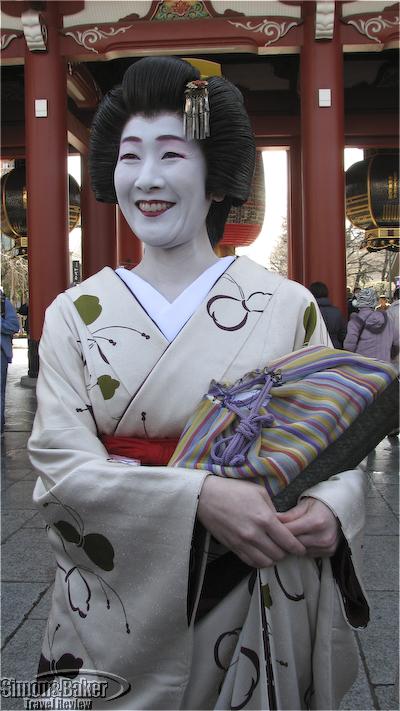
One of the geishas who walked with us
From there we drove to Omotesando Ukai-tei (http://www.ukai.co.jp/english/omotesando/index.html), a French influenced restaurant in a shopping mall where we had a Tenderloin Lunch Course, a refined and delicious four-course lunch. During the meal we noticed fine Ercuis French silverware and wood chopsticks, Reidel glassware, and embroidered napkins. We were served Dermotte non vintage Champagne followed by Assorted Appetizers, Roasted Bamboo Shoots, Shellfish Cream Soup, Ukai Beef Tenderloin Pan Fried and Dessert. Although we didn’t have a view from our seats the bar area had pretty city views. The restaurant, part of a chain of restaurants and museums, housed an exhibition space with a perfume bottle collection and a dessert lounge with Art Nouveau ceilings and lacquered pillars.
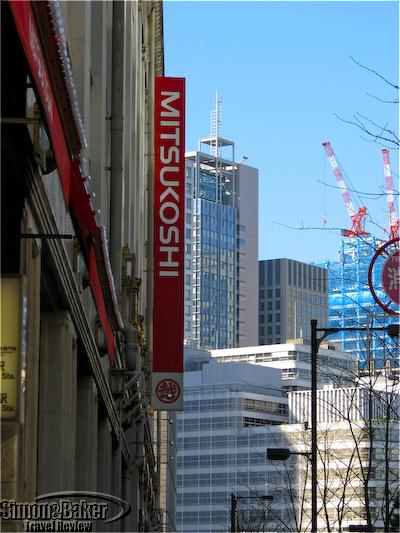
The main location of Mitsukoshi Nihonbahi, one of Tokyo’s most exclusive department stores
Following lunch we walked around the Omotesando and Aoyama areas. We visited the Espace Louis Vuitton Tokyo (Louis Vuitton Omotesando Building 7F 5-7-5 Jingumae, Shibuya-ku, Tokyo 150-0001, +81 03 5766 1088, www.espacelouisvuittontokyo.com) which was hosting French artist Xavier Veilhan; and the Ukiyo-e Ota Memorial Museum of Art (http://ukiyoe-ota-muse.jp/index-E.html), housing a collection of Ukiyo-e Japanese woodblock art.
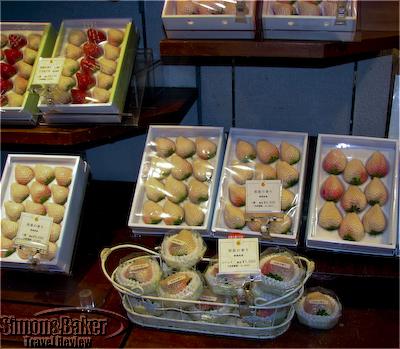
Strawberries for sale in the food hall of the Mitsukoshi Nihonbahi store
The next day after my delightful Japanese breakfast I was ready to face the cold again. This time we visited the main location of Mitsukoshi Nihonbahi store (Nihombashi Muro-machi 1-4-1, Chuo-ku, Tokyo 103-8001, +81 03 3241 3311, http://www.mitsukoshi.co.jp/store/fcs/english/1010/index.html), one of the most exclusive department stores in Tokyo. We arrived just in time to watch the opening ceremony at 10 a.m. during which the store staff welcomed arriving guests with deep bows. My favorite area of the beautiful and well stock multi-story store was the lower level where the food shops were located. It was filled with all types of hard to find eatable items including pastries, seafood, meat, chocolate, vegetable and fruit delicacies. I could have spent at least another hour exploring the food halls and tasting samples.
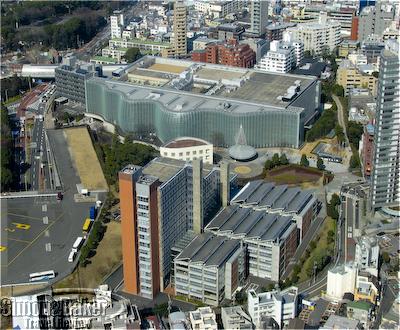
Another view of the city from the Mori Tower
From there we went to the Mori Tower in Roppongi Hills for an outstanding skyscraper view of Tokyo (http://www.roppongihills.com/tcv/en/ ). That morning we visited Tokyo Midtown, walked by the Mori Art Museum (http://mori.art.museum/eng/index.html) dedicated to promoting “art and life in the 21st century,” and the Suntory Museum of Art (http://www.suntory.com/culture-sports/sma/) dedicated to challenging conventional attitudes to the classification of art to reveal its beauty.
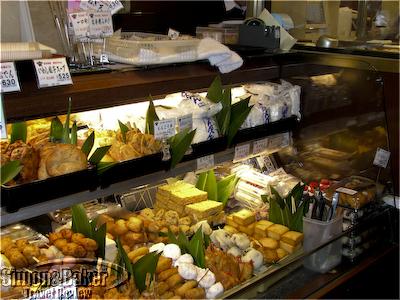
A display at the food hall of the Mitsukoshi Nihonbahi store
Lunch was at Rakutei (+81 3585 3743), a tiny family owned restaurant in Akasaka. Although there was no sign on the building to indicate the existence of a restaurant once inside we were welcomed in Japanese and invited to enter. We sat at a small counter facing an open cooking area. At first it looked like a sushi bar but we soon discovered it was not. An elderly man and his assistant were busy preparing the meal while the man’s wife placed dinnerware in front of us and offered us beverages. We had warm sake and a delicious tempura lunch served two bites at a time until we surrendered.
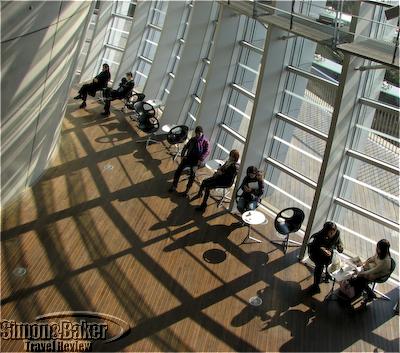
The interior of the National Art Center in Tokyo
After a lightning fast visit to the National Art Center (http://www.nact.jp/english/index.html ), a 14,000 square meter large venue for temporary art exhibitions, we ended the day with a stroll in a Ginza district shopping street. Ginza, meaning place where money is made in Japanese, is one of the most popular and most expensive tourist shopping areas of Tokyo, our tour guide explained.

A dragon water fountain in Shuzenji Village
After breakfast the next morning we drove to Shuzenji, a two and a half hour drive from Tokyo, for an overnight stay at Yagyu-no-sho, a traditional Japanese ryokan. By the time we had a tour of the traditional style ryokan, found our rooms and explored the area by the ryokan it was time for dinner and we retreated indoors.
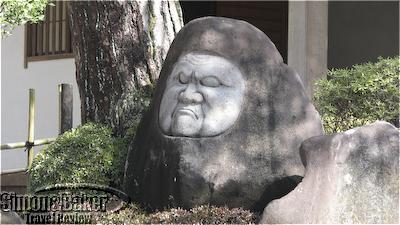
A stone head at the entrance to the Shuzenji Temple
The next day our visit to a local pottery artist’s shop was canceled providing an unexpected opportunity to stroll through Shuzenji Village, exploring the shops and visiting the interior of the Shuzenji Temple, a rare treat before our return home.
by Editor | May 16, 2011 | Accomodations, New Articles, Restaurants
By Elena del Valle
Photos by Gary Cox
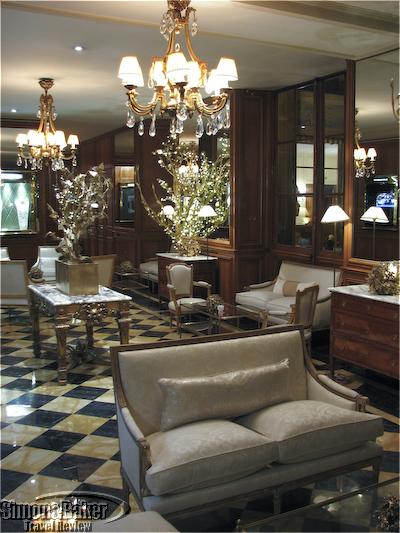
The common areas in Hotel de Crillon
Location, location, location. There is much truth to the saying in a city like Paris, France. Being in a good neighborhood means easy access to many of the attractions that make Paris one of the most alluring cities in the world.
From a tourist perspective the Place de la Concorde is a great location. While the Place itself is attractive it offers the added advantage that within walking distance or a short taxi ride from the Place there are many tourist points of interest like Tuilleries Gardens, Rue de Rivoli, Louvre Museum, Place Vendome, Place de la Madeleine and Champs Elysees Avenue as well as shopping venues and gourmet restaurants.
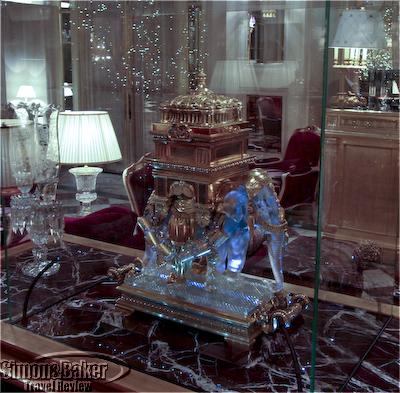
The Baccarat crystal elephant in the salon outside Les Ambassadeurs
On the Place, the Hotel de Crillon, part of a project commissioned in 1758 by Louis XV, became a private residence and was converted to a hotel in 1909. Over time the hotel has been the temporary home of United States Presidents Herbert Hoover, Theodore Roosevelt and Richard Nixon, Emperor Hirohito of Japan, Reza Shah Pahlavi of Iran, King George V of England, King Juan Carlos and the queen of Spain, Madonna, and Elizabeth Taylor among others. The historic building is to this day a luxury hotel. We stayed there during a holiday trip to the City of Lights.
For those who need to combine business with pleasure the hotel, located across the street from the United States Embassy, is in central Paris. Although the facade was under renovation and there was scaffolding covering the front of the building, inside there were many features that made the hotel worth a stay for business and leisure travelers. Our suite had a living area with a desk that was convenient for personal and business meetings and there was excellent internet connectivity for both of our computers.
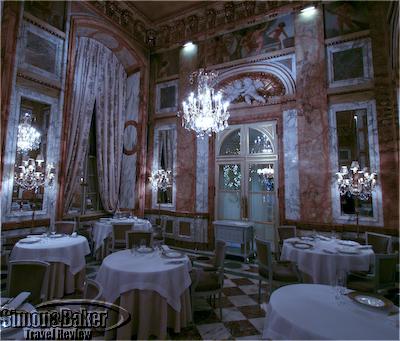
The dining room at Les Ambassadeurs
Over the years the marble filled historic building has been well maintained. Our spacious and handsome Presidential Suite looked onto Rue de l’Arcade and a building that may have been part of the embassy complex. We liked the well known entrance from the Place de la Concorde and another more discreet entrance on Rue de l’Arcade leading to Rue Saint Honore, a popular shopping street. As guests we had access to a fitness center, two restaurants and a bar within the hotel; we could also walk for exercise and dine at one of the myriad restaurants within a short distance of the hotel.
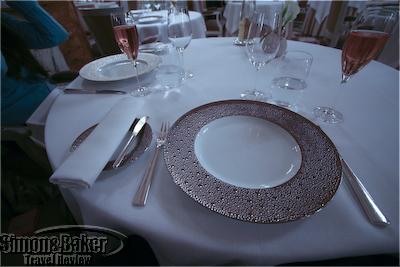
A place setting at Les Ambassadeurs
For years Les Ambassadeurs, the hotel’s gourmet restaurant, has stood out among the thousands of dining venues of the city. Its beautiful dining room and prized location on the Place de la Concorde have been among its attractions along with talented chefs and capable restaurant staff. During our stay at the hotel we dined at Les Ambassadeurs, which had undergone a change in management and chef, to rediscover the restaurant.
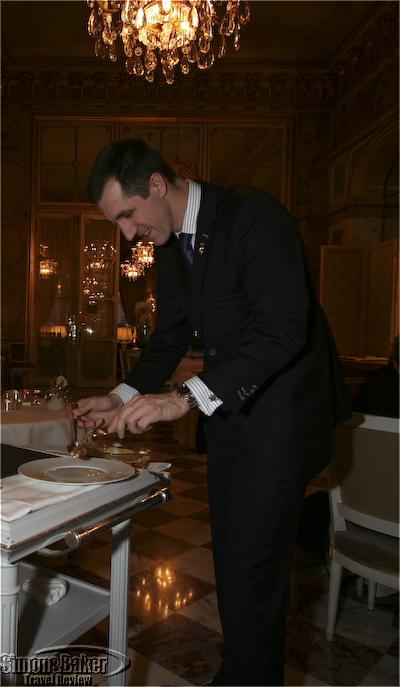
Pierre Jung, the restaurant manager at Les Ambassadeurs
We were pleasantly surprised to see Pierre Jung, the new manager and a familiar face. We knew him from his time at the well known Senderens restaurant in the nearby Place de la Madeleine. Christopher Hache, the promising new young chef, who we met briefly that day, also had experience at Senderens (and as it was formerly known Lucas Carton). Our delicious and well served tasting menu was a success. We plan to return to the restaurant when next we are in Paris.
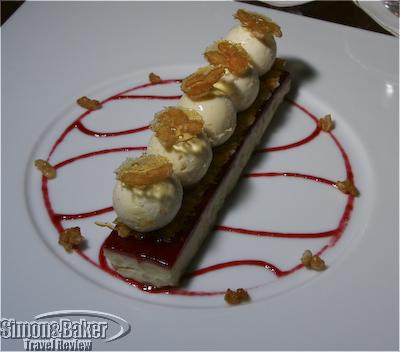
Dessert at Les Ambassadeurs
We thoroughly enjoyed our most recent stay at the Hotel de Crillon, especially our Presidential Suite and indulgent meal at Les Ambassadeurs. Visit the Simon & Baker Travel Review for information about the restaurant Les Ambassadeurs and Hotel de Crillon in Paris, France.
by Editor | Jan 17, 2011 | Accomodations, New Articles
Article and photos by Elena del Valle
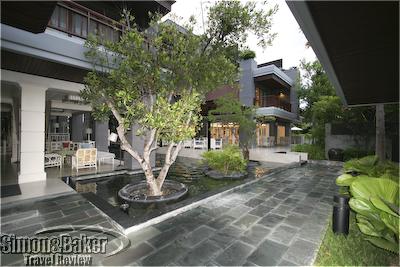
The courtyard area of the Rest Detail Hotel
It took many hours of travel and connections in two airports to arrive in Bangkok from the United States. When I arrived late in the evening the rain was pouring so hard we had to wait a few minutes to deplane because rather than parking directly at the terminal the airplane had parked on the tarmac and we had to be bussed to the terminal building. Except for the rain the transfer was all too familiar. It was necessary for us to descend the airplane staircase and cross over onto the bus partly in the rain then wait for the bus to be loaded before riding for what seemed a very long time to reach the airport building.
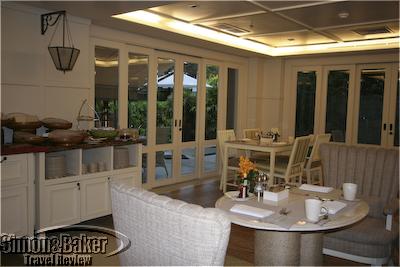
The breakfast room
I felt tired from the long flights with uncomfortable seats, indifferent service and bad airline meals, most of which I left untouched. Getting wet on arrival and the 11 hour time difference didn’t help matters. I was disillusioned as I exited the customs area eager to find my driver and leave the airport only to discover he was nowhere in sight (the same driver dropped me off in the wrong part of the airport on the return). I called the Rest Detail Hotel in Hua Hin and instantly felt reassured. Tar, the young man who answered, was patient and understanding. An hour and several phone calls later I managed to locate the driver. Within minutes we were on the road in the rain to Hua Hin.
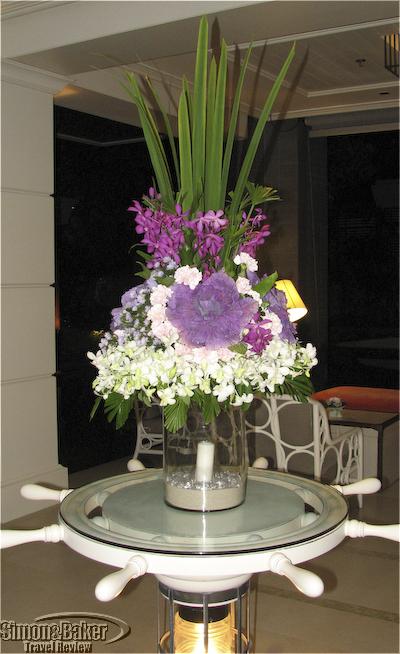
Flowers in the common area
The air conditioned car was clean and comfortable and the only noteworthy item during our drive was the military check point we encountered along the road on our way to the hotel. Once at the hotel everything was right. Tar was waiting for me. He welcomed me with a warm smile and took me straight to my suite. The rest of my stay was a pleasure. My luxurious beach facing suite and the hotel’s quiet ambiance, service orientation, and tasty meals provided the restful environment I sought to recover from the long trip and adjust to the time difference. Visit Simonandbaker.com to read about Thailand and the Rest Detail Hotel where I stayed.















































